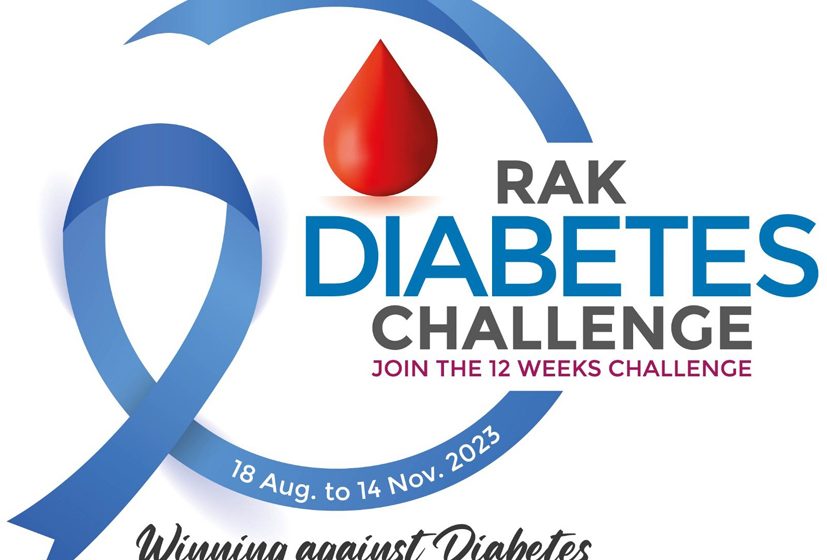RAK Hospital Sheds Light on Diabetic Foot Care to Prevent Amputations

25% of diabetics suffering from Diabetic Foot Disease face the traumatic prospect of surgical amputation
Recent studies have shown that the five-year survival rate for Diabetic Amputees is less than 43%
Crucial warning signs of Diabetic Foot Disease include tingling sensations, loss of feeling, cracks in the feet, changes in foot color or temperature, foot swelling, fungal infections, and the presence of sores, blisters, or ulcers.
30th October 2023; Ras Al Khaimah, UAE —RAK Hospital, continues its mission to educate and empower the community in the fight against diabetes. As part of the ongoing 3-month RAK Diabetes Challenge, Dr. Abhay Khadke recently led an engaging session on Diabetes Foot Care, equipping participants with essential knowledge to effectively manage this condition and take proactive measures to avoid serious complications.
Diabetes is a global concern, and between 7-10% of diabetics suffer from a condition known as Diabetic Foot Disease. In its early stages, this ailment can be managed and even cured with timely intervention. However, if ignored and neglected, it can have devastating consequences. Shockingly, about 25% of diabetics who suffer from Diabetic Foot Disease face the traumatic prospect of surgical amputation. Recent studies have shown that the five-year survival rate for Diabetic Amputees is less than 43%.
Diabetic Foot Disease is primarily caused by two factors: Diabetic Neuropathy and Peripheral Vascular Disease. Diabetic Neuropathy results in reduced sensation in the foot due to nerve damage, making trauma and injury go unnoticed. Peripheral Vascular Disease, on the other hand, reduces blood supply and circulation to the foot, leading to poor wound healing. This often results in infections damaging the foot tissues and bone, ultimately leading to misshapen feet. In severe cases, gangrene sets in, and amputation becomes the only choice to prevent the infection from spreading to other organs in the body.
Dr. Abhay Khadke emphasized that the non-surgical approach to treating foot ulcers involves wound cleaning and antibiotic use. In contrast, the surgical remedy requires removing the dead gangrenous tissue, improving blood circulation through arterial bypass or stent procedures, and, as a last resort, considering amputation.
To promote proper diabetic foot care, Dr. Abhay Khadke offered these daily tips:
- Daily Foot Examination: Check your feet daily for cuts, calluses, or any unusual changes.
- Hygiene: Wash your feet daily with soap and water, ensuring they are thoroughly dried afterward.
- Moisturize: If your foot skin is dry, moisturize it before bedtime daily.
- Socks and Shoes: Wear clean socks daily and ensure you have comfortable, well-fitting shoes.
- Barefoot Walking: Avoid walking barefoot to prevent injuries.
- Calluses and Corns: Do not attempt to remove these yourself; consult a professional.
Dr. Khadke also emphasized the crucial warning signs of Diabetic Foot Disease that should immediately prompt a visit to the doctor. These signs include tingling sensations, loss of feeling, cracks in the feet, changes in foot color or temperature, foot swelling, fungal infections, and the presence of sores, blisters, or ulcers.
During an engaging Q&A session, Dr. Abhay Khadke addressed key queries from the audience. He explained that the recommendation against walking barefoot primarily applies to individuals with diabetes, reassuring non-diabetics that they can confidently walk barefoot on grassy surfaces without concern. Moreover, he underscored the benefits of gentle foot massages for both diabetics and non-diabetics, as they contribute to improved blood circulation.
Dr. Khadke stressed the importance of daily exercise for everyone, highlighting its role in enhancing insulin utilization and promoting overall blood circulation. However, he advised diabetics with foot conditions to seek personalized exercise guidance from their healthcare providers. Depending on individual cases, doctors may recommend activities such as cycling, rowing, swimming, or other exercises that alleviate pressure on the feet.
In terms of dietary choices for managing Diabetic Foot Disease, Dr. Khadke emphasized the significance of adopting a diabetic-friendly diet. This entails avoiding saturated fats, oily foods, commercial fast foods, sugar, refined carbohydrates, alcohol, and smoking. Instead, individuals should focus on incorporating vegetable proteins, leafy greens, non-starchy fruits and vegetables, and whole grains into their daily nutritional intake.
RAK Hospital’s unwavering dedication to spreading awareness and knowledge about diabetes, especially concerning foot care, serves as a valuable resource for the community. By equipping individuals with the understanding of risks, preventive measures, and informed choices, they can significantly reduce the impact of this condition and lead healthier, more fulfilled lives.

















